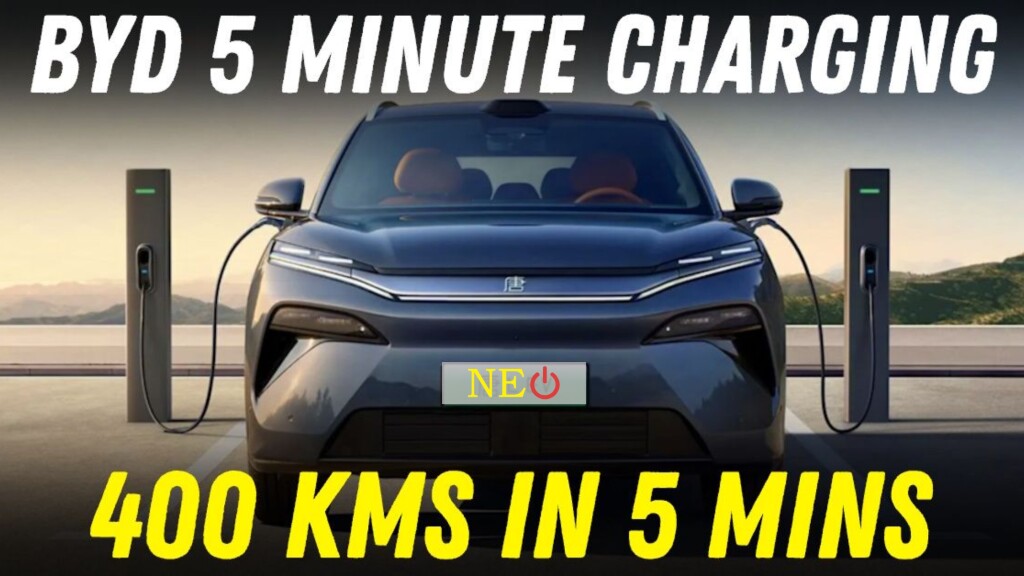Electric vehicle (EV) technology is advancing at an unprecedented pace, and China's leading automaker, BYD (Build Your Dreams), has made a groundbreaking leap with its new ultra-fast EV charging system. The company claims this system can charge an EV almost as fast as refueling a conventional gasoline-powered car. This innovation addresses one of the biggest challenges in the EV industry: long charging times.
Table of contents [Show]
- Key Highlights of BYD’s Ultra-Fast Charging System
- How Fast is BYD’s Charging System?
- Cutting-Edge Technology Powering BYD’s Charging System
- Nationwide Deployment of BYD’s Ultra-Fast Chargers
- BYD’s New Charging System and Future EV Models
- Global Implications: How BYD’s Innovation Impacts the EV Market
Key Highlights of BYD’s Ultra-Fast Charging System
- Peak Power of 1,000 kW: Enables ultra-fast charging speeds.
- 5-Minute Charge for 400 km (250 miles): Makes EVs more convenient for daily and long-distance travel.
- Silicon Carbide Power Chips: Allows high-efficiency power transfer at 1,500V.
- Blade Lithium-Iron Phosphate Battery: Ensures safety, durability, and rapid charging.
- Nationwide Rollout: Plans for over 4,000 ultra-fast charging stations across China.
How Fast is BYD’s Charging System?
BYD's new charging infrastructure operates at a peak power output of 1,000 kW, allowing an EV to gain 400 km (250 miles) of range in just five minutes. This brings charging speeds on par with traditional fuel refilling, making EV adoption more practical for users who are concerned about long wait times.
In comparison:
- Tesla Supercharger V4: ~350 kW (20-minute charge for 320 km)
- Porsche Turbo Charging: ~450 kW (15-minute charge for 400 km)
- BYD’s New System: 1,000 kW (5-minute charge for 400 km)
Cutting-Edge Technology Powering BYD’s Charging System
1. Silicon Carbide Power Chips
This advanced semiconductor technology enables higher voltage handling (up to 1,500V), ensuring efficient and ultra-fast power delivery with minimal energy loss.
2. Blade Lithium-Iron Phosphate (LFP) Battery
BYD's in-house Blade Battery technology is designed for enhanced safety and performance, handling extreme fast-charging conditions without overheating or degradation.
3. Smart Energy Management System
The charging stations are equipped with AI-driven energy management, optimizing power flow and preventing grid overload during peak hours.
Nationwide Deployment of BYD’s Ultra-Fast Chargers
To support its revolutionary charging system, BYD plans to roll out over 4,000 high-speed charging stations across China. This initiative aims to:
- Reduce EV range anxiety by ensuring widespread availability.
- Encourage EV adoption by making charging times more competitive with gasoline refueling.
- Enhance grid efficiency through intelligent load balancing and energy storage integration.
BYD’s New Charging System and Future EV Models
The first vehicles to be equipped with compatibility for the new ultra-fast charging system include:
- Han L Sedan (upgraded model)
- Tang L SUV (next-generation version)
These vehicles will be optimized to take full advantage of the high-speed charging infrastructure, reducing downtime and improving overall user experience.
Global Implications: How BYD’s Innovation Impacts the EV Market
1. Competitive Pressure on Global Automakers
BYD’s 1,000 kW ultra-fast charging sets a new benchmark, challenging major EV players such as Tesla, Mercedes-Benz, and Volkswagen to enhance their charging technologies.
2. Potential Expansion Beyond China
Although currently focused on China, BYD may expand its ultra-fast charging technology to global markets, further accelerating EV adoption worldwide.
3. Addressing Power Grid Concerns
Ultra-fast charging requires a robust grid infrastructure. BYD is integrating energy storage solutions at its charging stations to minimize grid strain and ensure stability during high-demand periods.
Conclusion
BYD’s new ultra-fast EV charging system represents a major breakthrough in electric mobility. By eliminating one of the biggest consumer concerns—charging time—BYD is paving the way for mass EV adoption. As the company continues to roll out this technology, the automotive industry will need to adapt quickly to keep up with this revolutionary advancement.









